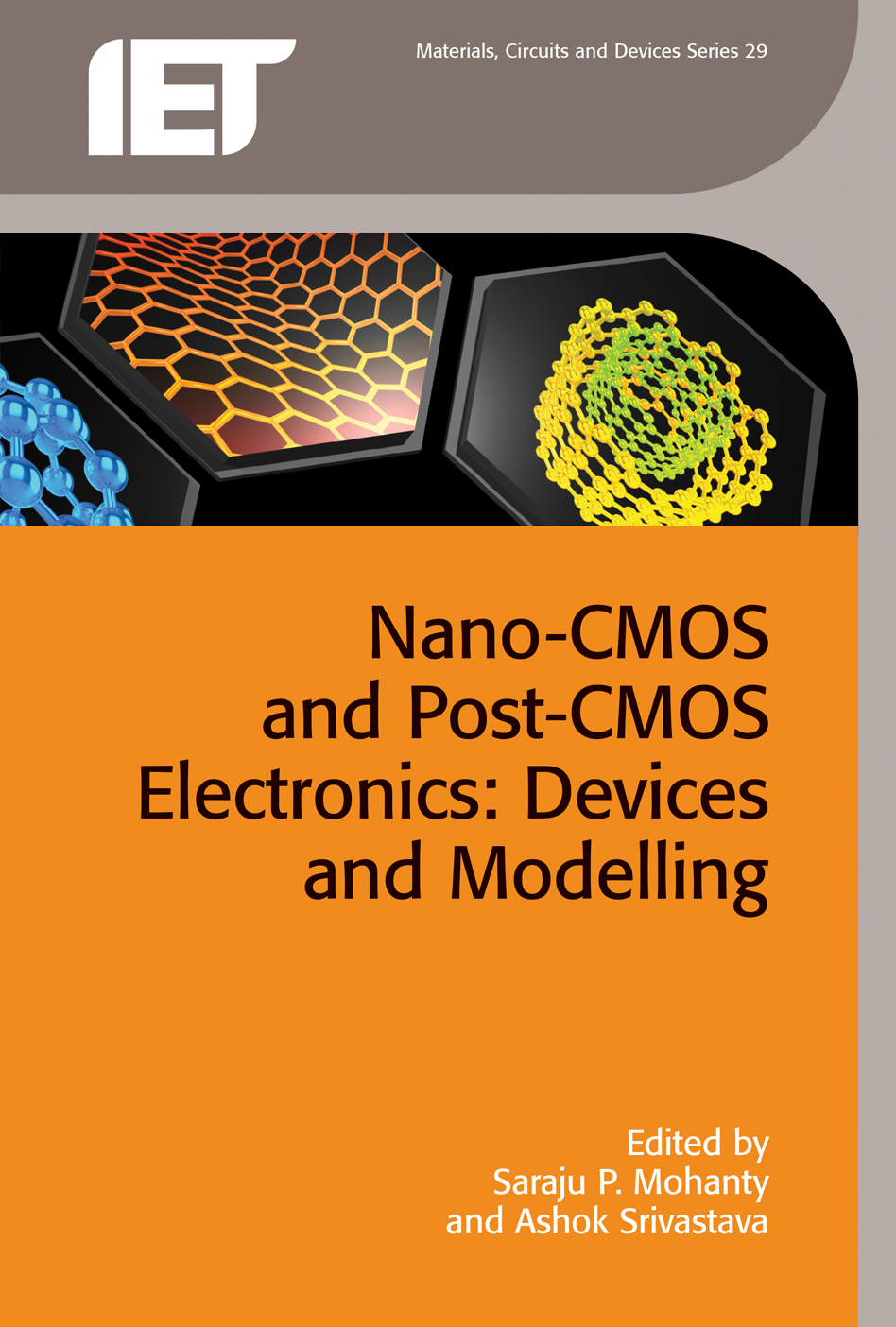- Agricultural Engineering and Technology
- Applied Physics
- Built Environment
- Computing and Networks
- Control, Robotics and Sensors
- Electrical Regulations
- Electromagnetics and Radar
- Energy Engineering
- Healthcare Technologies
- History and Management of Technology
- IET Codes and Guidance
- Manufacturing
- Materials, Circuits and Devices
- Model Forms
- Security
- Telecommunications
- Transportation

Nano-CMOS and Post-CMOS Electronics
Volume 1: Devices and modelling
Edited by Saraju P. Mohanty, Ashok Srivastava
The demand for ever smaller and portable electronic devices has driven metal oxide semiconductor-based (CMOS) technology to its physical limit with the smallest possible feature sizes. This presents various size-related problems such as high power leakage, low-reliability, and thermal effects, and is a limit on further miniaturization. To enable even smaller electronics, various nanodevices including carbon nanotube transistors, graphene transistors, tunnel transistors and memristors (collectively called post-CMOS devices) are emerging that could replace the traditional and ubiquitous silicon transistor. This book explores these nanoelectronics at the device level including modelling and design.
Topics covered include high-k dielectrics; high mobility n and p channels on gallium arsenide and silicon substrates using interfacial misfit dislocation arrays; anodic metal-insulator-metal (MIM) capacitors; graphene transistors; junction and doping free transistors; nanoscale gigh-k/metal-gate CMOS and FinFET based logic libraries; multiple-independent-gate nanowire transistors; carbon nanotubes for efficient power delivery; timing driven buffer insertion for carbon nanotube interconnects; memristor modeling; and neuromorphic devices and circuits.
This book is essential reading for researchers, research-focused industry designers/developers, and advanced students working on next-generation electronic devices and circuits.
About the Editors
Saraju Mohanty is Professor at the Department of Computer Science and Engineering, University of North Texas, where he is the director of NanoSystem Design Laboratory (NSDL). His research interests focus on Energy-Efficient High-Performance Secure Electronic Systems. Prof. Mohanty is an inventor of 4 US patents, and an author of 200 peer-reviewed articles and 3 books. Prof. Mohanty is the current Chair of Technical Committee on Very Large Scale Integration (TCVLSI) of the IEEE Computer Society, is on the editorial board of IET Circuits, Devices and Systems, Integration and Journal of Low Power Electronics, and serves on the organizing and program committee of several international conferences.
Ashok Srivastava is Professor of Engineering at the Division of Electrical & Computer Engineering of Louisiana State University, Baton Rouge, where his research interests lie in low-power VLSI design and testability for nanoscale transistors and integration, and nanoelectronics with focus on novel emerging devices and integrated circuit design based on carbon nanotubes, graphene and other reduced dimension 2D materials. He is the author of more than 160 technical papers including conference proceedings, book chapters, a patent and a book on Carbon Based Electronics. Prof. Srivastava serves on the Editorial Review Board of Modeling and Numerical Simulation of Material Science (MNSMS), Journal of Material Science and Chemical Engineering (JMSCE), The Scientific World Journal (Electronics) and is Editor-in-Chief of the Journal of Sensor Technology.
Publication Year: 2016
Pages: 384
ISBN-13: 978-1-84919-997-1
Format: HBK
Editors: Saraju P. Mohanty, Ashok Srivastava
